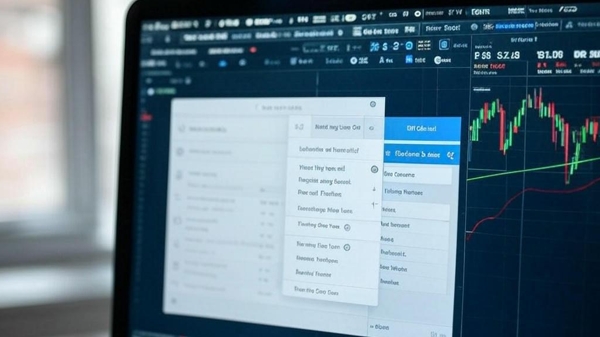In the world of investing, risk management is the core element of successful trading. Whether you are chasing short-term profits in the forex market or seeking long-term appreciation in stocks or cryptocurrencies, effective stop-loss strategies can help protect your assets and ensure steady growth. Among them, the “Trailing Stop,” as a dynamic stop-loss tool, has become the preferred choice of many professional traders due to its flexibility and efficiency.
This article will delve into the mechanism, application scenarios, and setup methods of trailing stops, combined with real cases to help readers better understand this important tool. Whether you are a beginner or an experienced trader, learning how to use trailing stops correctly will bring significant benefits to your investment journey.

1. How Trailing Stop Works
What is a Trailing Stop?
A trailing stop is a dynamic stop-loss strategy whose core logic is to automatically adjust the stop-loss level as prices move. Unlike a traditional fixed stop-loss, a trailing stop moves upward (for long positions) or downward (for short positions) in line with market conditions, thereby locking in more potential profit while reducing losses caused by price reversals.
How it works:
Suppose you hold a long position and set a trailing stop of 5%. As the price rises, the stop level will rise accordingly, staying 5% below the current price. If the price falls, however, the stop level will not move lower, but remain at the previous highest level. Once the price touches the stop level, the trade will automatically close.
This mechanism allows trailing stops to automatically adapt to market fluctuations, protecting realized gains while avoiding the regret of exiting too early.
2. Application Scenarios of Trailing Stop
Application in Forex Trading:
The forex market is known for its high liquidity and volatility, making trailing stops an ideal risk management tool. For example, when holding a long position in EUR/USD, you can set a fixed percentage (e.g., 3%) as a trailing stop. This way, even if EUR/USD experiences a temporary pullback, your position will not be closed prematurely, leaving room for further upside.
Application in the Stock Market:
In the stock market, trailing stops are especially useful for investors who want to capture more profits as prices rise. For instance, if you hold shares of a tech company, you can set a trailing stop based on price fluctuations. If the company’s strong performance drives prices higher, your stop will also rise, ensuring you keep most of your gains if the market suddenly falls.
Importance in Cryptocurrency Trading:
The cryptocurrency market is famous for extreme volatility, making trailing stops particularly important. For example, when holding Bitcoin or other cryptocurrencies, sharp price swings can render fixed stop-loss strategies ineffective. By setting a trailing stop, you can respond more flexibly to price changes. If Bitcoin rises from USD 30,000 to 40,000, your trailing stop will also move up, ensuring you lock in some profits during a pullback instead of missing out due to exiting too early or too late.
3. How to Set Trailing Stop
Choosing Parameters: Percentage, Fixed Points, or Custom Methods
- Percentage mode: The most common method where investors select a percentage based on their risk tolerance. For example, a 5% trailing stop means the stop level will always remain 5% below (or above) the current price.
- Fixed points mode: This suits traders who want to manage risk based on specific price ranges. For example, in forex trading, you might set 100 points as the trailing stop distance.
- Custom mode: Some platforms allow users to adjust stop levels dynamically based on technical indicators such as moving averages.
Using the Platform: A Guide to Ultima Markets’ MetaTrader (MT4)
Step 1. Open MT4, log in to your Ultima Markets trading account (if you are not yet a user, click here to register a trading account), and select a trading instrument (e.g., EUR/USD or Bitcoin CFD).

Step 2. Right-click the open order and select “Trailing Stop.”

Step 3. From the dropdown menu, choose a stop distance (e.g., 15 points, 30 points) or customize the points.

Step 4. After confirmation, the system will automatically activate the trailing stop without manual adjustment.
Tips
- MT4 must remain open, otherwise the trailing stop won’t work (a VPS can solve this).
- Try it first with a demo account (click here to register a demo account and start practicing), rather than risking real money.
Demo trading is an ideal way to learn investing and trading, as it helps you:
- Get familiar with platform operations and market trends.
- Test trading strategies without taking actual risks.
- Build confidence in a safe environment before entering real markets.
4. Advantages and Disadvantages of Trailing Stop
Advantages:
- Automation: Trailing stops save traders from manually monitoring the market, especially during prolonged uptrends.
- Flexibility: Compared with fixed stop-losses, trailing stops adjust automatically with price moves, adapting better to market changes.
- Reduced emotional interference: Many traders act irrationally due to fear or greed, while trailing stops provide an objective risk management tool.
Disadvantages:
- Premature exits: In case of temporary volatility, trailing stops may trigger too early and close positions.
- Parameter sensitivity: Overly conservative or aggressive settings can reduce effectiveness, so parameters must be optimized by asset type and personal style.
5. Case Studies
Case 1: A Forex Trader’s Success Story
Mr. Zhang, a professional forex trader, set a 3% trailing stop in his EUR/USD trade. As EUR/USD rose from 1.10 to 1.15, his stop level also moved from 1.068 to 1.1155. Even when the price later fell to 1.12, he still secured a solid profit rather than being stopped out by short-term fluctuations.
Case 2: A Crypto Investor’s Lesson and Reflection
Ms. Li, a beginner crypto investor, set a 10% trailing stop when Bitcoin was at USD 30,000. However, due to the market’s high volatility, the price fell more than 10% in a short time, forcing her trade to close. This case reminds us to be cautious in setting stop parameters in highly volatile markets.
6. Conclusion
As an efficient risk management tool, trailing stops help investors protect assets and achieve stable growth in complex market environments. Whether you are a beginner or an experienced trader, learning how to set and use trailing stops correctly will significantly benefit your investment journey.
Actionable advice:
- Choose parameters according to your risk preference and trading style.
- Get familiar with common trading platforms such as MetaTrader or TradingView.
- Continuously optimize your strategies, combining technical analysis and market trends to improve results.
We hope this article provides you with clear and practical guidance, enabling you to invest with greater confidence and stability!



